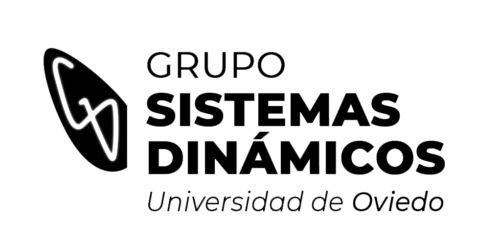- Non uniformly hyperbolic dynamics
The lack of density of uniformly hyperbolic systems explains the abundance of complex dynamics. Two main mechanisms are known to generate the persistence of the non uniform hyperbolicity: robust homoclinic tangencies associated with thick horseshoes and robust heterodimensional cycles between blenders. The first ones were studied by their relation with the well-known Newhouse phenomenon and with the important process of formation of non-hyperbolic unidimensional strange attractors. The second ones appear in the construction of non-hyperbolic robustly transitive diffeomorphisms. This line of research deals with the study of both mechanisms: analytical proofs of the existence of strange attractors (two-dimensional in our case) and the persistence of (degenerate) high codimension tangencies as a threshold for unexpected phenomena in the dynamics of vector fields. - Unfolding of singularities
The singularities of fields are our interest for two reasons: we want to detect those that can be organizing centers of chaotic dynamics and we want to understand their role in the context of coupled systems. We will continue the study of Hopf-Bogdanov-Takens singularities and the nilpotent singularity of codimension four in dimension four. In relation to the latter we will also address a global issue: the creation of robust heterodimensional cycles by disturbance of bifocal homoclinic orbits. - Quasi-homogeneous systems and multiplicity of limit cycles
Integrability, limit cycles and structural stability are permanent concerns for our group. We bring up objectives related to the study of quasi-homogeneous systems. We had obtained an algorithm to determine, in dimension two, their number as a function of the degree. We want to extend this algorithm to dimension three to deal later with integrability and global dynamics concerns. Obviously, dimension three leads to difficulties not present in a planar space. For planar systems we will address issues of multiplicity of limit cycles. - Analytical and topological techniques in the global study of a dynamical system.
In this line of work we aim to give global results on the dynamics of a nonlinear system, either by conjugation with linear systems, or from the local behavior in a simple element environment (equilibrium point or periodic orbit). The proposal is divided into two different subjects as we deal with a discrete dynamic system or with a continuous system. The objectives of the proposal are sometimes continuation of results already achieved in previous publications, others, however, are problems that are addressed for the first time. - Dynamical Systems and Biological Sciences
In the next decades Dynamical Systems and Biology are going to discover new common interests. We will continue the study of neuronal dynamics focusing on three aspects: homoclinic scenarios, dynamical changes dependent on the proximity to singular limits of fast-slow systems and synchronization phenomena. We also bring up an objective related to population dynamics and include in our project the treatment of medical images from a dynamical systems perspective.
University of Oviedo
